
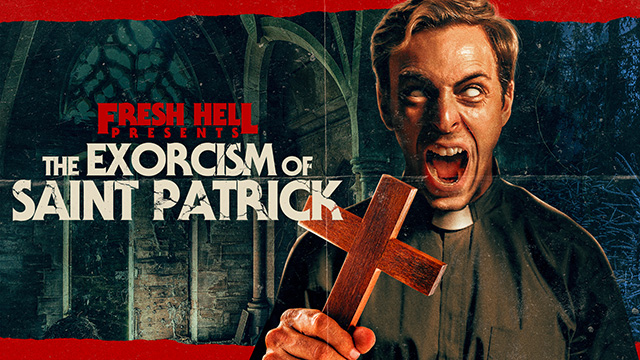
Saturday August 24, 2024 | Movie Reviews | Neal
Fresh Hell: The Exorcism of Saint Patrick
A Review by Aaron Barrocas
Trigger warnings - torture, suicide, conversion therapy
Mild spoiler warning
"Fresh Hell: The Exorcism of Saint Patrick"
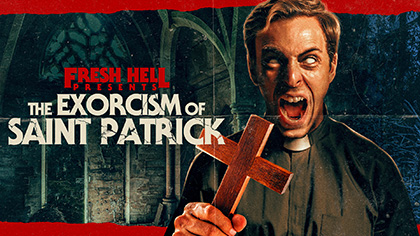
Conversion therapy is the perfect subject for a true horror movie. Trauma inflicted under the guise of love, abuse masquerading as concern, and broken parents willing to do anything to “fix” their perfectly healthy children. The right film about this subject can give its victims a much-needed bullhorn. The Exorcism of Saint Patrick may turn out to be that film.
The Exorcism of Saint Patrick is the first part of an anthology trilogy called Fresh Hell. All three movies were directed by Quinn Armstrong, and produced by Cranked Up Films, the genre division of indie production company Good Deed Entertainment. They each explore different stories, but are thematically related. An indie trilogy alone is a tremendous accomplishment - but to have the stories mean something, and give a true sense of catharsis, is where the financial and creative risks of taking on a trilogy pay off.
The Exorcism of Saint Patrick begins with a complete story told in under four minutes. Teenage Alana (Maya Jeyam) is kidnapped at her parents request, tortured in the name of religion, seemingly fails to “pray the gay away”, and takes her own life. It was important for Armstrong to open the film this way - a microcosm of everything we’re about to see in greater detail. Alana’s story is more common than you’d think, and this is why conversion therapy is outlawed in almost half of US states. WYH readers are probably aware of this practice already, but just in case you aren’t familiar with conversion therapy, here’s a quick primer - and I’ll link to more info at the bottom of this article. A teenager is taken from their parents’ home - often in a style that emulates a kidnapping for no clear reason other than cruelty, told that not only do many of their schoolmates, their parents, and likely some teachers or other adults disapprove of the person they are, but also God disapproves. Then, they’re given false hope that they can change all of this by a religious leader who claims to have seen many success stories. But the process will be emotionally, and in many documented cases, physically painful. The teen inevitably fails, and their self-esteem is destroyed over not changing something that never could have been changed. The only thing the whole charade has changed is that the teenager now statistically has twice the risk of suffering suicidal ideations as their peers who did not undergo conversion therapy. What occurs in The Exorcism of St. Patrick, save the supernatural elements, is not hyperbole, but rather statistical fact.
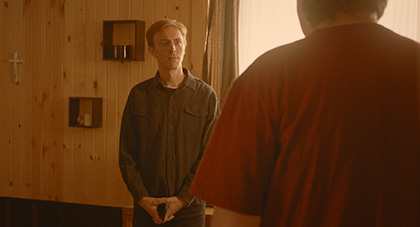
Following the intro mentioned above, we meet a socially uncomfortable, strong-willed gay teenage boy named Patrick (Michael J. Cline), but our Pastor, also Patrick (Steve Pinder), insists on calling him Trick for the differentiation from his own name - to avoid confusion. It seems unnecessary to rename the teen, since they are the only two people for miles, but maybe Pastor Pat wants to start off on the right foot by getting Trick to accept being somebody he’s not.
We experience the conversion therapy with Trick, and we hurt for him. Pat the Pastor seems surprised that he can’t reform Trick’s ways. He consults with his benefactor, the owner of the ranch where these therapies take place, and is told he may be out of a job if he doesn’t help this child. The idea of aversion therapy is floated.
Aversion therapy is an antiquated, unscientific method of getting the wayward to associate their unnatural urges with unpleasantness. This was the basis of the “Ludovico technique” used to reform criminal-minded Alex in A Clockwork Orange. Pastor Pat’s version is no less harsh.
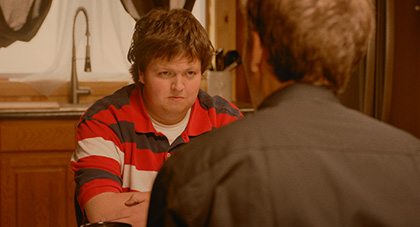
Any viewer recognizes that regardless of piousness or best intentions, Pat is the villain, as he’s inflicting constant pain on his teenage charges. Pat does not believe in exorcisms, as he believes that once a sinner has changed, any demons will leave on their own, as demons can only inhabit a willing host. Pat fails to realize that he may be filled with demons of his own. And the title does reference an exorcism…
This is, after all, a horror movie, and a good one. Some pretty fantastic visual effects were created by Mosquito Entertainment’s Gary Jones - a brilliant indie vfx artist whose nutso long, decades-spanning resume includes Evil Dead 2, Army of Darkness, and Mosquito (plus directing episodes of Xena: Warrior Princess). When you see his name in the credits, you know that there will be some insane visuals, and this latest line on his impressive IMDB doesn’t disappoint.
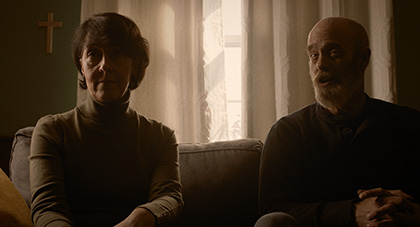
The performances cement the atmosphere of repression and terror. Steve Pinder’s Patrick is sincere, and troubled. He’s not surprised to find himself hurting a child, even if he’s clearly not proud of himself. He is a villain who is on the verge of recognizing the terrible man he has been, and Pinder always appears to be boiling with emotion just below the surface - as if it would take very little for him to push things too far.
A viewer feels for Michael J. Cline’s Trick almost immediately. He doesn’t want to be where he is, but he didn’t want to be home either. He’s smarter than his parents and many others in his life - including Patrick. He hasn’t yet found a place where he can be comfortable, and be himself - which is a tragedy, because if he were given that freedom, the world would meet the curious, thoughtful, interesting person that Patrick is too busy hurting to see and hear. Cline’s portrayal of Trick is real and raw, and we experience his pain in a very unpleasant and visceral way, thanks to Quinn Armstrong’s merciless directing.
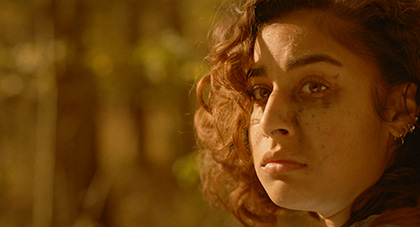
Maya Jeyam’s Alana, from the opening, is a vital piece of the story, and her influence is felt throughout. She carries her role with the strength of someone insistent upon keeping their dignity no matter what the circumstances. There’s somebody in your life who has something to say. It’s always there, and it comes from a place of truth. They’re not a blowhard - they simply know something other people don’t, and want that knowledge shared. That’s Alana, and by the time those credits roll, you’re going to respect the hell out of her.
Fair warning - there are graphic depictions of torture in this film. I’m not a look-away person, and I looked away. This is a story about a practice that at its very core is based in shame, humiliation, and degradation. The movie couldn’t be made without representation of torture. But if you can stomach it, you will be rewarded with a satisfying, well-earned third act.
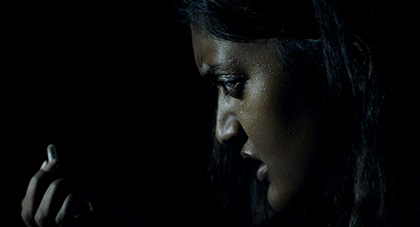
And a note to clarify - The Exorcism of St. Patrick isn’t anti-religion. Trick tells Pat that there are churches that are happy to accept any worshippers that walk through the doors. Nobody’s trying to turn any churchgoers into atheists here - but Quinn Armstrong does remind us to think twice about the people we believe in. Congratulations to this strong indie team for making a film that’s gripping, frightening, and hopefully impactful.
Fresh Hell: The Exorcism of St. Patrick will be available on many streaming services on Monday, August 26th, and will soon be followed by the other two Fresh Hell entries: Wolves Against the World, and Dead Teenagers.
For more information on the topics discussed, please visit thetrevorproject.org
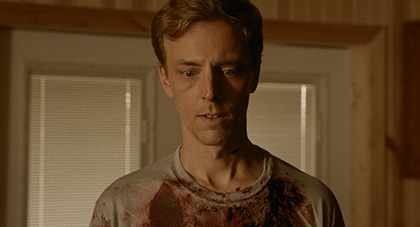
Aaron Barrocas is an award-winning screenwriter, filmmaker, and editor living in Los Angeles. He has spent the past 25 years as an active part of the entertainment industry. AaronBarrocas.com.